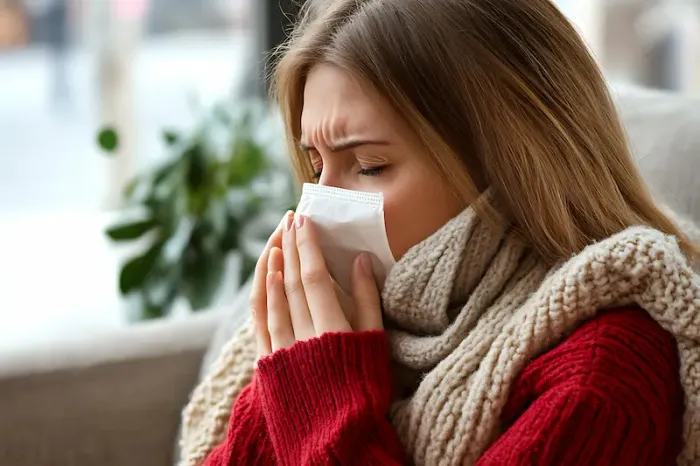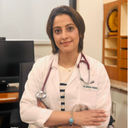Lung Infection Signs, Causes And Types Explained
Discover the signs, causes, and types of lung infections. Learn how bacterial, viral, or fungal infections affect your lungs, their common symptoms, and when to seek medical attention for timely treatment.

Written by Dr. J T Hema Pratima
Reviewed by Dr. Dhankecha Mayank Dineshbhai MBBS
Last updated on 23rd Oct, 2025

What is a Lung Infection?
A lung infection is an infection of the lower respiratory tract—structures below the voice box—including the trachea, bronchi, bronchioles, and the lung’s air sacs (alveoli). When organisms like viruses, bacteria, or fungi invade these spaces, they trigger inflammation, fluid buildup, and mucus production. This interferes with oxygen exchange, leading to cough, fever, chest pain, and breathlessness.
Lower respiratory tract infections (LRTIs) are a major cause of illness worldwide and include acute bronchitis (often viral), pneumonia (infection of the air sacs), bronchiolitis (small airway infection, mainly in infants), and more. Pneumonia remains a leading cause of hospitalisation and death in vulnerable groups such as older adults, very young children, and people with chronic conditions. Tuberculosis (TB), a specific bacterial infection, is a global health concern due to airborne transmission and potential for chronic, persistent cough and weight loss.
Signs and Symptoms of Lung Infection
Common early signs:
• Cough (dry or productive)
• Fever, chills, and sweating
• Shortness of breath, especially on exertion
• Chest discomfort or pain that may worsen with deep breaths or coughing
• Fatigue, malaise, body aches
• Sputum that may be clear, white, yellow, green, or occasionally blood-tinged
Red flags requiring urgent care:
• Blue lips or fingertips (cyanosis), severe shortness of breath, or oxygen saturation below 92% at rest
• Confusion, dizziness, or fainting, especially in older adults
• Chest pain that feels like pressure or tightness (rule out cardiac causes)
• High fever (>39°C or 102.2°F), persistent fever beyond 3–4 days, or rapid breathing
• Coughing up large amounts of blood
• Symptoms rapidly worsening after initial improvement
Age-specific differences:
• Older adults: May have fewer classic signs (low or no fever). Confusion, weakness, falls, or decreased appetite can signal pneumonia.
• Children: Fast breathing, chest indrawing, poor feeding, irritability, or pauses in breathing (apnea) are warning signs. Bronchiolitis typically causes wheeze and feeding difficulty in infants.
• People with asthma/COPD: Wheezing and chest tightness may flare with infections—seek care early to avoid severe exacerbations.
Consult Top Lung Specialists
Types of Lung Infection
Here are the different types of lung infection:
1. Viral infections
• Acute viral bronchitis: Often caused by common cold viruses, influenza, or RSV. Cough can last 2–3 weeks, sometimes longer, even as fever subsides.
• Influenza and COVID-19: Can cause viral pneumonia, especially in older adults and those with chronic diseases. COVID-19 pneumonia may present with persistent fever, dry cough, and breathlessness; some patients’ oxygen levels drop before they feel severely short of breath (“silent hypoxemia”).
2. Bacterial pneumonia
• Typical pneumonia: Classically caused by Streptococcus pneumoniae; symptoms often include abrupt fever, productive cough, chest pain, and breathlessness.
• Atypical pneumonia (“walking pneumonia”): Often due to Mycoplasma pneumoniae, Chlamydophila, or Legionella; symptoms can be milder or more gradual—fatigue, dry cough, low-grade fever.
3. Aspiration and hospital-acquired pneumonia
• Aspiration pneumonia: Occurs when food, stomach acid, or saliva is inhaled into the lungs, introducing bacteria and causing inflammation. Risk is higher with swallowing problems, reflux, or altered consciousness.
• Hospital- or ventilator-associated pneumonia: Often more severe, caused by resistant bacteria; occurs ≥48 hours after admission or in ICU settings.
4. Tuberculosis and fungal infections
• TB: Chronic cough (≥2 weeks), weight loss, night sweats, fever; requires specific antibiotics for months. It’s airborne and preventable with prompt diagnosis and treatment.
• Fungal: Histoplasmosis, aspergillosis, coccidioidomycosis; more common in immunocompromised individuals or specific geographic areas.
Causes and Risk Factors
Let’s see who is most at risk:
• Age: Infants and older adults
• Chronic diseases: COPD, asthma, heart disease, diabetes, kidney disease, neurological disorders affecting swallowing
• Weakened immunity: Cancer therapy, transplant medications, HIV
• Lifestyle and environment: Smoking (damages airway defences), vaping, air pollution, exposure to sick contacts
• Healthcare exposures: Recent hospitalisation, ventilator use, nursing home residence
• Specific risks: Aspiration (GERD, stroke), TB exposure (close contact with a person with TB)
Why risk factors matter:
• They influence both the type of organism likely to cause the infection and the treatment needed. For example, hospitalisation increases risk for resistant bacteria, and inhaled steroids in COPD may increase pneumonia risk when high-dose or frequent.
How Doctors Diagnose Lung Infections
Here’s how doctors diagnose lung infections:
• History and physical exam: Clues include symptom onset, fever pattern, exposure history (travel, sick contacts), underlying conditions, and swallowing issues. Doctors listen for crackles, wheezes, or reduced breath sounds.
• Imaging: Chest X-ray confirms pneumonia and may show location and extent (lobar vs patchy). CT scan clarifies uncertain cases, complications (abscess, effusion), or atypical patterns.
• Laboratory tests:
- Blood tests: Complete blood count (CBC) for white cell changes; CRP or procalcitonin can support bacterial vs viral assessment and help guide duration of antibiotics.
- Sputum culture and Gram stain: Useful if hospitalised, severe disease, or not improving; targets therapy.
- Viral PCR/antigen tests: Influenza, RSV, COVID-19; identifying a virus may reduce unnecessary antibiotics.
- TB testing: Sputum smear/PCR and cultures; chest imaging.
• Oxygenation: Pulse oximetry measures blood oxygen saturation; low values suggest more severe illness and need for oxygen support.
Get The Tests Here
Treatment Options: What Works and When
Here are some treatment options for lung infection:
1. Antibiotics
Necessary for bacterial pneumonia, guided by severity and risk factors. For otherwise healthy adults with community-acquired pneumonia (CAP), a typical course is about 5 days, extended if fever or instability persists [9]. Choice depends on local resistance patterns, allergies, and comorbidities.
2. Antivirals
• Oseltamivir for influenza is most effective when started within 48 hours of symptoms; it can reduce complications in high-risk patients.
• COVID-19 antivirals or targeted therapies may be used based on risk and timing; hospitalised patients may require oxygen and specific protocols.
3. Antifungals and anti-TB therapy
• Antifungals (e.g., voriconazole for aspergillosis) are reserved for confirmed or highly suspected fungal infections.
• TB requires multi-drug therapy for several months under medical supervision.
4. Supportive care
• Oxygen for low oxygen saturation; IV fluids for dehydration; bronchodilators for wheeze; chest physiotherapy in select cases. Pain/fever control (acetaminophen or ibuprofen) improves comfort and breathing.
• Steroids: Helpful in COPD exacerbations or some severe COVID-19 cases; not routinely recommended for uncomplicated CAP due to mixed outcomes.
At-Home Care and When to See a Doctor
What you can do:
• Rest and hydration: Thin secretions and prevent dehydration. Warm fluids can soothe cough.
• Humidified air: Helps loosen mucus. Sleep with head elevated if coughing worsens at night.
• Cough management: Honey (for adults and children over 1 year) can ease cough; avoid OTC cough suppressants that overly sedate or suppress productive cough without guidance.
• Fever/pain: Acetaminophen or ibuprofen as directed. Monitor temperature twice daily.
Monitoring checklist:
• Track breathlessness (can you speak in full sentences?), fever trend, sputum changes, and oxygen saturation if you have a pulse oximeter.
• If you have asthma/COPD, use your action plan and quick-relief inhaler as prescribed.
When to escalate
• Worsening breathlessness, persistent high fever beyond 3–4 days, confusion, oxygen saturation <92%, chest pain, or no improvement after 48–72 hours of prescribed antibiotics.
• If symptoms persist beyond two weeks, consult a doctor online with Apollo 24|7 for further evaluation. If your condition does not improve after trying these methods, book a physical visit to a doctor with Apollo 24|7.
Special Populations
Here’s some lung infections which can affect children, older adults and pregnant women:
1. Children and bronchiolitis
• Bronchiolitis (often due to RSV) affects infants with small airways, causing wheeze, fast breathing, feeding difficulty, and sometimes apnea. Most cases are mild and improve with supportive care at home, but watch for dehydration and laboured breathing.
2. Older adults
• Atypical presentation is common: low fever, confusion, falls, or loss of appetite. They are at higher risk of complications and hospitalisation. Early evaluation is key.
3. Pregnant people and immunocompromised patients
• Physiological changes in pregnancy can increase severity of flu or COVID-19—vaccination and early antiviral therapy are protective.
• Immunocompromised people may have unusual pathogens and subtle signs; lower threshold for imaging and targeted tests. Related LSI: signs of lung infection in adults.
Prevention: Vaccines and Daily Habits
Here’s how you can prevent it:
1. Vaccination
• Influenza vaccine annually: Reduces risk of severe flu and pneumonia.
• Pneumococcal vaccines: Recommended for older adults and certain high-risk groups to prevent bacterial pneumonia.
• COVID-19 vaccination and boosters: Prevent severe disease and hospitalisation.
• Pertussis (whooping cough) boosters: Important for adults in close contact with infants.
2. Healthy habits
• Hand hygiene and mask use during respiratory virus surges.
• Smoking and vaping cessation: Restores airway defences over time and reduces infection risk.
• Clean indoor air: Ventilation and, where appropriate, HEPA filtration.
• Oral hygiene and head-of-bed elevation in hospitals and nursing homes to reduce aspiration.
Complications and Long-Term Effects
Here are the possible complications of lung infection:
• Pleural effusion and empyema: Fluid and pus around the lungs requiring drainage.
• Lung abscess: A cavity of infection; may need prolonged antibiotics or procedures.
• Sepsis and septic shock: Systemic response that can be life-threatening; urgent care is essential.
• ARDS (acute respiratory distress syndrome): Severe inflammatory lung injury leading to respiratory failure.
Recovery and lingering symptoms
• Cough and fatigue can persist for weeks after pneumonia, especially in older adults. A gradual return to activity is appropriate; pushing too fast can set you back.
• Post-viral cough often improves over 3–8 weeks as airway inflammation resolves. If cough persists >8 weeks, re-evaluation is advised.
Myths vs Facts About Lung Infections
Here are some myths and facts about lung infection:
1. Myth: Green phlegm means you need antibiotics.
Fact: Colour reflects immune activity, not necessarily bacteria. Duration, fever, breathlessness, and risk factors guide antibiotic decisions.
2. Myth: If your fever drops, the infection is gone.
Fact: Fever can resolve while inflammation persists; cough and fatigue may linger for weeks. Complete your prescribed course and follow recovery milestones.
3. Myth: All lung infections are contagious.
Fact: Viral infections and TB can be contagious; aspiration pneumonia and many hospital-acquired infections are not spread person-to-person.
Consult Top Lung Specialists
Conclusion
Lung infections are common, but they are not one-size-fits-all. Understanding where the infection sits (airways vs alveoli), what organism is likely (viral, bacterial, fungal, TB), and how your personal risk factors play in can help you act confidently and early. Most mild infections improve with rest, fluids, and symptom management; some require antibiotics or antivirals, while others—like TB or fungal infections—need specific, longer treatments. Watch for red flags such as severe shortness of breath, confusion, low oxygen, or persistent high fever, and don’t hesitate to escalate care. Prevention is powerful—vaccines, hand hygiene, smoke-free living, and smart hospital practices collectively reduce both the chance and severity of infection. If you’re unsure whether your cough is “just a virus” or something more, there’s no harm in checking sooner. An online consultation can triage your symptoms, order a chest X-ray or labs, and start the right therapy when needed. If symptoms persist beyond two weeks, consult a doctor online with Apollo 24|7 for further evaluation. If your condition does not improve after trying these methods, book a physical visit to a doctor with Apollo 24|7. With the right information and timely care, most people recover fully and get back to their lives.
Consult Top Lung Specialists

Dr. Sumara Maqbool
Pulmonology Respiratory Medicine Specialist
12 Years • MBBS, DNB Respiratory, critical care and sleep medicine, DrNB superspeciality Critical care, IDCCM, IFCCM, EDIC
Delhi
Apollo Hospitals Indraprastha, Delhi
(25+ Patients)

Dr Vishwa Vijeth K.
Pulmonology Respiratory Medicine Specialist
8 Years • MBBS, MD ( Respiratory Medicine)
Bangalore
Apollo Clinic Bellandur, Bangalore
Dr. Sasikamalam
General Practitioner
1 Years • MBBS
COIMBATORE
Apollo Sugar Clinic Coimbatore, COIMBATORE
Dr. Naseeha Mohammed S V
Pulmonology Respiratory Medicine Specialist
6 Years • MBBS, MD ,DNB Respiratory Medicine
Bengaluru
Apollo Clinic, Sarjapur Road, Bengaluru

Dr. Chaithanya R
Internal Medicine Specialist Diabetologist
16 Years • MBBS, MD Internal Medicine, Fellowship in Diabetes(UK), CCEBDM(PHFI)
Bangalore
Apollo Clinic Bellandur, Bangalore
(75+ Patients)
Consult Top Lung Specialists

Dr. Sumara Maqbool
Pulmonology Respiratory Medicine Specialist
12 Years • MBBS, DNB Respiratory, critical care and sleep medicine, DrNB superspeciality Critical care, IDCCM, IFCCM, EDIC
Delhi
Apollo Hospitals Indraprastha, Delhi
(25+ Patients)

Dr Vishwa Vijeth K.
Pulmonology Respiratory Medicine Specialist
8 Years • MBBS, MD ( Respiratory Medicine)
Bangalore
Apollo Clinic Bellandur, Bangalore
Dr. Sasikamalam
General Practitioner
1 Years • MBBS
COIMBATORE
Apollo Sugar Clinic Coimbatore, COIMBATORE
Dr. Naseeha Mohammed S V
Pulmonology Respiratory Medicine Specialist
6 Years • MBBS, MD ,DNB Respiratory Medicine
Bengaluru
Apollo Clinic, Sarjapur Road, Bengaluru

Dr. Chaithanya R
Internal Medicine Specialist Diabetologist
16 Years • MBBS, MD Internal Medicine, Fellowship in Diabetes(UK), CCEBDM(PHFI)
Bangalore
Apollo Clinic Bellandur, Bangalore
(75+ Patients)
More articles from respiratory-conditions
Frequently Asked Questions
1) How do I tell the difference between bronchitis and pneumonia?
Bronchitis typically causes a persistent cough and wheeze with minimal findings on chest X-ray; pneumonia often adds fever, breathlessness, chest pain, and shows infiltrates on X-ray. If in doubt, seek medical evaluation. Related term: viral bronchitis vs pneumonia.
2) How long does pneumonia last?
Fever and breathlessness often improve within 3–5 days of correct treatment, but cough and fatigue can last several weeks. If you’re not steadily improving after 48–72 hours, recheck with a clinician.
3) Are green or yellow phlegm signs of bacterial infection?
Not necessarily. Sputum colour reflects immune activity. Doctors consider duration, fever, oxygen levels, risk factors, and tests to decide on antibiotics. Related term: wet cough with green phlegm meaning.
4) When should I go to the hospital for a lung infection?
Go urgently for severe shortness of breath, oxygen saturation below 92%, confusion, chest pain, high or persistent fever, or if symptoms worsen quickly.
5) Which vaccines help prevent lung infections?
Seasonal influenza, pneumococcal, COVID-19, and pertussis (Tdap) vaccines reduce risk and severity. Ask your clinician about your schedule based on age and health status.


